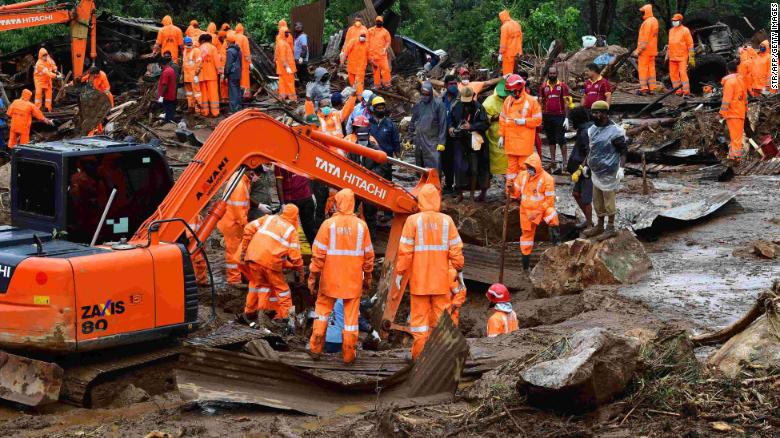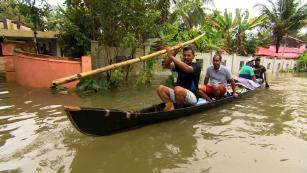Introduction
In India in 2020, there was a large-scale flood caused by monsoon rains. The tragedy affected residents of 11 states of the country and resulted in hundreds of victims among the local population (“Heavy Monsoon Rains” [0:13]). This event was widely covered by both photo and video reports. However, as part of journalistic ethics, these news coverages must meet ethical standards to respect the rights of the people involved and minimize potential harm. The presented materials meet ethical standards, although they have points of controversy.
Human Tragedy News Coverage
In the first place, when considering the ethical principles of news of broadcasting and photojournalism, it is necessary to pay attention to the subject of coverage. The presented materials report a tragedy caused by natural phenomena, which led to numerous human casualties. In this situation, it is important for a journalist to maintain the privacy and dignity of the people involved in the tragedy. In the presented materials, the focus is on the severe consequences of a natural phenomenon that respects this ethical principle. The scenes presented in the video and photo have an emotional appeal and can evoke a sense of compassion and empathy in the audience. As part of the assessment of the consequences of reporting these events, it should be noted that the materials presented can attract public attention to help people in the affected areas, which is important for ethical journalism. At the same time, they can cause dissatisfaction with the direct participants, who would not want their grief to become public.
Photojournalism Ethical Principles


The main dilemma for photojournalism is the need for public coverage of a particular event. In regards to reporting floods in India, reporting, especially with photographic material, is especially important as it draws attention to the problem. The value of these personnel lies not only in the ability of people to realize the need to provide immediate assistance to victims but also in highlighting potential dangers. The presented materials can be used both by the government of India and other countries to prevent similar tragedies in the future. In this regard, these materials not only have a low probability of leading to future trauma but can also be used for the benefit of society. The photo shows the tragedy of ordinary residents of the affected areas, which implies an emotional appeal and compassion for the problem. This aspect identifies that the reporter respected the rights of these people, striving to cover precisely their tragedy.
The code of ethics for photojournalism dictates that photographic materials must comply with the principles of accuracy, fairness, and originality. First of all, photographs should reflect objective reality and tell a true story. In the presented materials, rescue services are involved in the search for missing people, as well as local residents are sailing on a boat through the flooded area. This footage provides an accurate picture of the impact India and its people are experiencing from the flood. The photographs represent both the tragedy of local residents and the efforts of the authorities to help the affected territories. This aspect identifies that the materials comply with the fairness principle and cover the problem from different angles, involving several stakeholders. Checking the originality of photographs in news reports is not as easy as assessing their compliance with other ethical principles. However, since the tragedy occurred almost two years ago, the authenticity and originality of these photo materials can be established through information searches using search engines. The presented footage is original and made at the scene of events, as they are related to other materials that can be found.
Warren Bovee Decision Making Questions
Warren Bovee invites photojournalists to answer six questions before creating photo coverage of specific events. These questions help professional photographers decide on the ethics of covering an event using photo materials. Within Bovee’s proposed sets of criteria, it is important to evaluate how relevant the use of photographs is in reporting a given tragedy. The result of the use of photographic materials in this situation is to increase public awareness of the problem in the region and the possible attraction of help. This aspect identifies that the use of a particular means has real good as a result. At the same time, there is no certainty that the photo report is capable of achieving this result.
It is also important that the affected people may be dissatisfied with the involvement of the public in their personal grief. However, public attention can stimulate active work to help survivors and rebuild damaged areas. The same result can also be achieved by video filming, whereas the text could not create the necessary emotional appeal. A photo report from the scene has a high chance of withstanding the tests of publicity, as it does not imply conflict and does not involve controversial materials. Thus, we can conclude that the use of photo-reportage in this situation is truly moral. These means allow journalists to report the ongoing tragedy and draw public attention to it without causing trauma to the people involved.
News Broadcast Ethical Principles
As with photojournalism, news broadcasting has a code of ethics that reporters should follow. First of all, it is necessary to tell the story of the event and the people involved in it. The presented video contains a narrative about the causes and consequences of the tragedy, as well as its impact on the inhabitants of the affected area (“Heavy Monsoon Rains”). Accuracy and fairness are other critical principles. As part of the video, reporters present footage of the flood, people affected, and rescue activities. However, little attention is paid directly to the impact of the tragedy on the lives of ordinary people, and more emphasis is placed on the pressure that the flood is putting on the government’s efforts to minimize damage. This aspect does not reduce the accuracy of the video but casts doubt on its fairness, as it highlights the interests of a predominantly limited group.
The principle of harm minimization is also observed within the framework of this video material, as it does not create a conflict but only draws attention to the problem. The presented video does not exploit people, as it offers footage filmed directly on the scene without focusing on a specific personal tragedy. However, within the framework of the video, the goal of treating people as ends is not achieved, as insufficient attention is paid to the consequences of the tragedy on the lives of ordinary people. However, reporters respect the people involved in the story by not pressuring or utilizing their tragedy. In general, from an ethical point of view, video reporting offers an accurate representation of events, but the focus is shifted from the people to the government activities.
Moral Principle School
Considering the photo and video materials from the point of view of Aristotle’s virtue ethics, it should be noted that the video does not meet the principles of balance. Although the material presented in the video provides facts about the consequences of the flood on people’s lives, reporters focus more on the context of the tragedy (“Heavy Monsoon Rains”). In particular, they emphasize that in India during this period, there was already tension associated with the pandemic. Thus, the reporters were not able to sufficiently reveal the tragedy of ordinary people affected by the flood. At the same time, within the framework of the ethics of virtue, the presented photos are more in line with the principles of balance, as they emphasize both rescue activities and the consequences for the affected people.
Ethical Assessment
News broadcast and photojournalism have their own distinctive features that require reporters to follow specific ethical principles. When reporting the events of the tragedy in India, the presented materials managed to create a truthful and, at the same time, emotional picture of what was happening. However, the video footage focuses more on the context of the tragedy than its impact on people’s lives, which reduces its fairness. In this regard, the observance of the principle of respect for the people involved is controversial in this video since not enough attention is paid to the consequences for ordinary residents. The video respects the right to privacy by not highlighting the personal tragedies of the people involved. At the same time, the photographic materials are accurate, fair, and original and respect the dignity of the people involved. In general, the presented video and photo materials paint a true picture of the tragedy, drawing public attention to the problem in the region. They also do not violate the ethical principles of journalism, which makes them ethical in reporting news events.
Works Cited
“Heavy Monsoon Rains Trigger Flood Chaos Across India.” YouTube, uploaded by BBC News, 2020, Web.
Regan, Helen, and Swati Gupta. “Monsoon Rains Trigger Tea Plantation Landslide in India’s Kerala State, Killing at Least 43 People.” CNN World, 2020, Web.